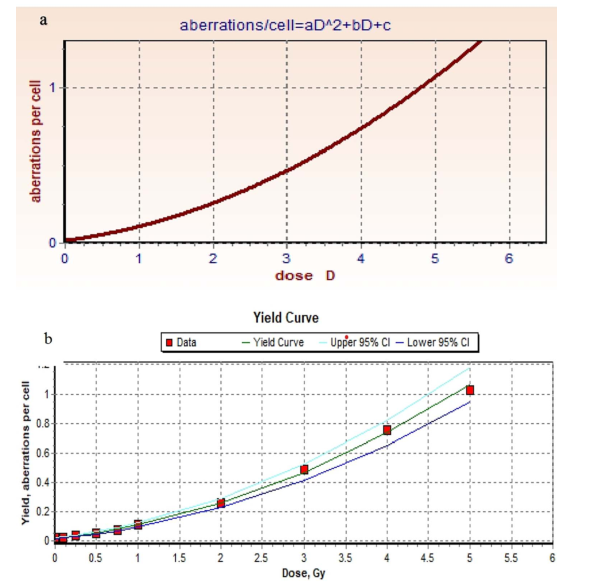Highlight: CIRP established the dose–response calibration curves for X-ray-induced micronuclei based on its own laboratory conditions and provided a reliable tool for biological dosimetry in accidental or occupational radiation exposure
Dose estimation is of great significance for health risk assessment and treatment planning of over-exposed people after the occurrence of radiation accidents. The increased risk of nuclear accidents and terrorism has led to an increased demand for a rapid biometric Dosimetry. Biodosimetry can be used for the preliminary classification of suspected exposed individuals in large-scale radiation events and for biological dose reconstruction. The most commonly used biodosimetry methods are based on the evaluation of the radiation-specific dicentric chromosomes (Dic) and micronuclei (MN) in the exposed individuals’ peripheral blood lympho-cytes (PBLs).
Dicentric chromosome assay (DCA) has become the “gold standard” for biological dosimetry for decades because of its low background level and high specificity for ionizing radiation. In recent years, the cytokinesis-block MN (CBMN) assay has proven to be a very reliable and thoroughly validated standardized biometric dosimetry that can be used as an alternative to DCA for the evaluation of DNA damage in individuals who are occupationally, medically and accidentally exposed to radiation. Compared with DCA, CBMN method is faster in the evaluation and has the potential for high automation and is sensitive in the irradiation range of 0.3-5 Gy, making it highly appropriate for triage in mass casualty incidents. The dose–response of MN varies in laboratories due to different protocols, scoring criteria, etc. Thus, using calibration curves produced elsewhere to interpret the dose may introduce extra uncertainty.

Dose–response calibration curve for MN induced by X-rays; data were fitted with CABAS (a) and (b) Dose
Estimate programmes.
CIRP established the dose–response calibration curves for X-ray-induced MN in human PBLs based on its own laboratory conditions for the first time. The dose-response calibration curves generated by both the CABAS and Dose Estimate software matched well and showed good calibration curves. The curve can be applied to the future biometric dosimetry requirements in response to emergency preparedness for radiological accidents. Moreover, it has certain limitations, and further research should be conducted to assess the influences of age, gender and smoking status on current findings.
Contact: official@cirp.org.cn



 打印
打印



